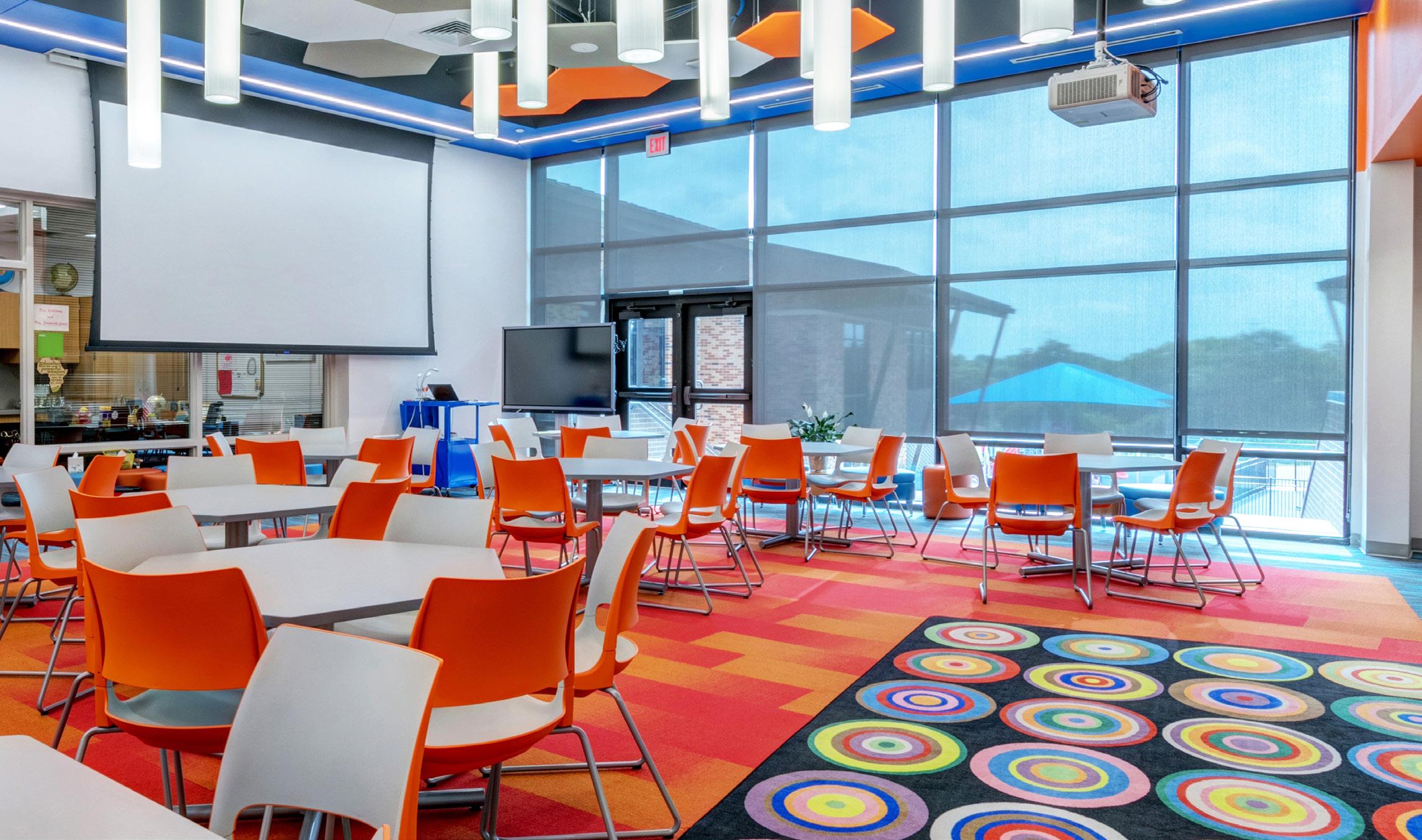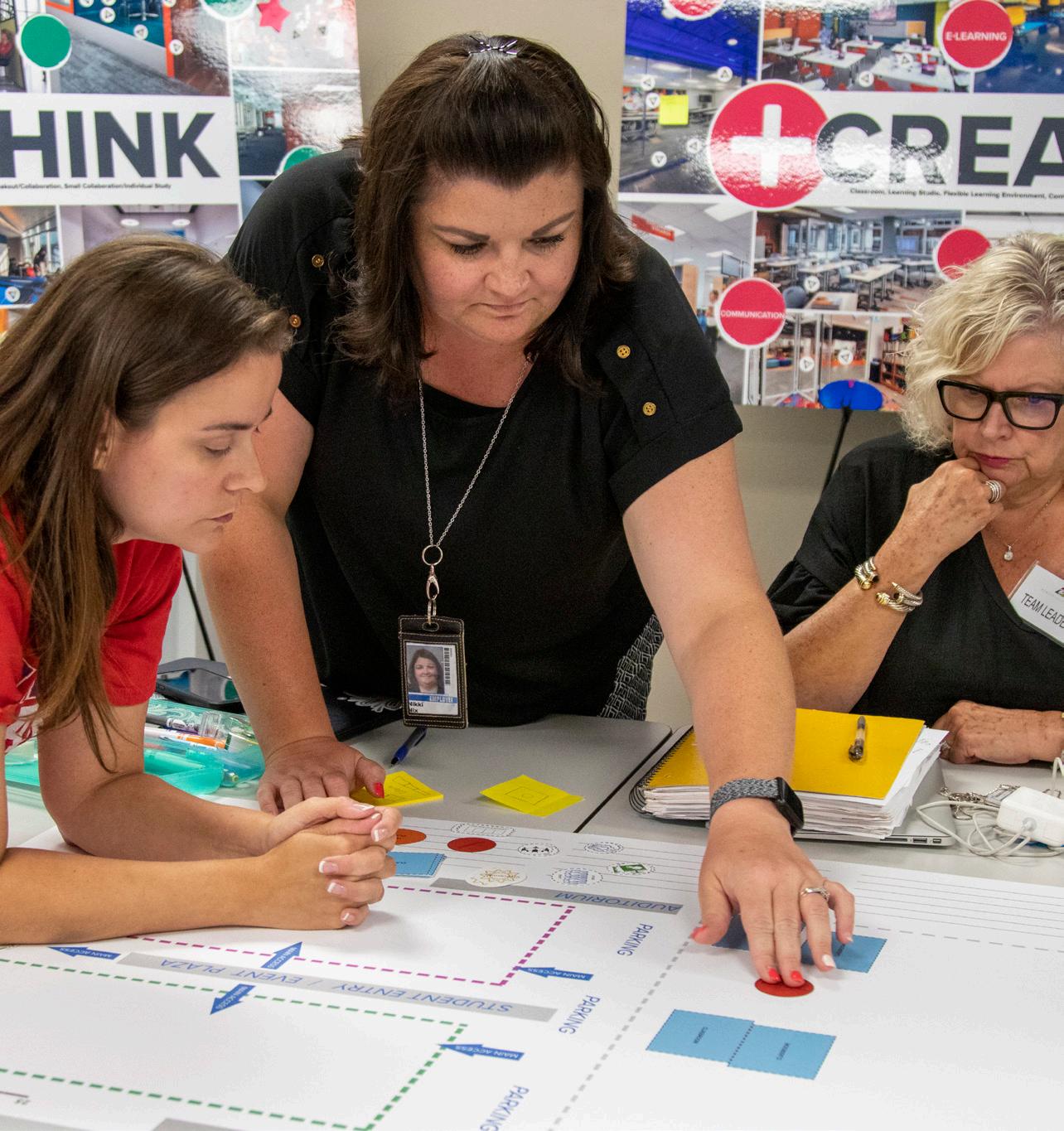
5 minute read
Turning the Page on Safety & Security in our Schools
Leesa Vardeman, VLK Principal
On May 18, 2018, school safety changed forever for Texas schools. Eight students and two teachers were fatally shot, and thirteen were wounded at Santa Fe High School in Santa Fe ISD, located near Houston. The shooting was the second-deadliest school shooting in the United States that year and it was in our backyard. No longer were we commiserating with public schools states away; we were faced with devastating violence in our own community. School safety immediately became a priority for state and local leaders. Governor Abbott called for a plan to make Texas schools safer and charged legislators to analyze the situation and report how the state could meet those needs. The Texas Society of Architects stepped into the discussion by creating a School Safety Workgroup that consisted of a dozen representatives of the top education design firms throughout the state to assist in solving this problem and become a resource to legislators. As a member of the work-group, I witnessed a group of specialized, long-tenured architects who had dedicated their entire careers to designing schools that support learning, struggle to develop a solution that would just make this problem go away. As architects, we have a front-row seat with local school districts when it comes to planning, budgeting, designing, and implementing best practices. Each one of us has been part of significant safety and security-hardening and improved technology implementation over the past decade; yet the techniques employed did nothing to prevent this catastrophe.
Beyond access control, security cameras, and twoway classroom communication, we quickly realized that to further harden our schools would only serve to exacerbate the situation. As architects dedicated to creating supportive environments, we were concerned that schools that look and function like prisons would serve only to amplify stress and anxiety in students.
Continued on next page >>
Students need engaging learning environments where they can thrive; teachers need spaces that are interactive tools for delivering curriculum, not sterile sanctuaries. Our students shouldn’t start their day walking through metal detectors or be fearful going to band practice. They deserve a place that inspires health and happiness, free from fear.
The number one challenge when approaching school safety is how to protect students from those who are supposed to be in the building and in the classroom, just as the perpetrator in Santa Fe was. To protect our children from their fellow students, it is time that we turn the page on school safety, move away from further hardening of our schools, and focus on identifying and treating the mental health of our students. Governor Abbott’s School Safety Action Plan rightfully places significant priority on the prevention of these heartbreaking events and has challenged our school districts to improve access to treatment, to report students’ concerns and any associated threat assessment, and expand education related to identifying mental health issues such as stress, depression, and suicide.

As architects we recognize that we too, have a significant role to play in addressing mental health issues in our schools. There are a number of ways in which this can be accomplished:
The design of engaging spaces, in which students feel comfortable and excited to participate, is Job One.
Designing spaces that support a school-wide culture where all students feel valued and a part of something larger than themselves.
Designing mental health counseling suites that are informally available to all students can improve access and reduce the stigma against seeking help.
Designing spaces that foster individualized learning and support unique learning styles improves engagement and can reduce stress.
Designing for school safety is woven into all the decisions we make as architects. Rest assured that every line we place on the page and every conversation we have is tempered by what is best for our students. This is a complex and multi-faceted problem that can’t be solved by metal detectors alone. Let’s move forward and start discussing modes of prevention while we continue to perfect a safe and secure infrastructure. The introduction of natural light into interior spaces has been shown to improve health and performance. Sunlight triggers the release of serotonin in the brain, enhancing our mood and overall sense of happiness. Without adequate exposure to sunlight, serotonin levels sink, which can lead to irritability, fatigue, and depression.
“Light is essential for our health and well-being. Ensuring that we receive adequate levels at the appropriate times of day benefits our alertness, mood, productivity, sleep pattern, and many aspects of our physiology.” – Dr. Victoria Revell, Survey Clinical Research Centre
In schools, design features such as large windows and transparent walls connecting indoor and outdoor spaces not only let in more natural light, but serve to link students with their community both within and beyond the facility.
Designing schools that break down large populations into more intimate communities allow a teacher to personally connect with each student.

VLK LAUNCH®
Captures stakeholder voices in a collaborative inquiry-based process to create your conceptual design that our architects bring to life.
LAUNCH




Dr. Jim Chadwell, Superintendent, Eagle Mountain-Saginaw ISD
Scan me!










